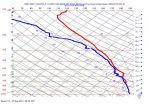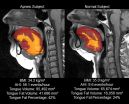(Press-News.org) Having few friends, family and a general lack of social support is associated with poor health and quality of life and depression in young men and women a year after having a heart attack, according to new research in the Journal of the American Heart Association.
Social support is the perception of having friends or family who serve as confidants and companions, offer advice and information, show emotional concern, or provide financial or material support, said Emily Bucholz, lead researcher and a student in the School of Medicine and the Department of Chronic Disease Epidemiology in the Yale School of Public Health in New Haven, Connecticut.
The findings linking the relationship between social support and health outcomes in heart attack patients are consistent with previous studies centered on older people, mostly men. But this study adds the new dimension of younger patients and women, and presents the opportunity to consider changes in guiding patients after heart attacks.
"Studies like this are opening up a wide list of different types of risk factors than the ones we conventionally think about," said Harlan Krumholz, M.D., S.M., the study's senior author and director of the Center of Outcomes Research and Evaluation at Yale-New Haven Hospital, and a professor in Yale's schools of medicine and public health.
"We shouldn't just be concerning ourselves with pills and procedures," Krumholz said. "We have to pay attention to things like love and friendship and the context of people's lives. It may be that these efforts to help people connect better with others, particularly after an illness, may have very powerful effects on their recovery and the quality of their lives afterwards."
Researchers evaluated self-reported social support from 3,432 heart attack patients (ages 18-55) and surveyed them at one and 12 months. The patients were from the VIRGO study (Recovery in Variation: Role of Gender on Outcomes of Young AMI Patients), a research project observing younger patients after heart attack, particularly women, from the United States and Spain.
Patients were categorized as having low, moderate or high social support focused on health status, physical and mental functioning, depressive symptoms and disease-related quality of life. Twenty-one percent were classified as having low social support. Men and women had comparable social support levels.
At initial examination, patients with low social support were more likely to:
be single
unemployed
live alone
smoke
abuse alcohol and
have cardiovascular risk factors, including high blood pressure, diabetes and depression.
One month and 12 months following a heart attack, on average, patients with low social support had:
lower mental functioning
lower quality of life and
more depressive symptoms.
Surprisingly researchers did not observe gender differences even though clear gender differences had been reported in previous social support studies involving older patients.
Currently, social support factors are not included in risk models used to evaluate patients after heart attack, but they are strong predictors of health outcomes.
"This study adds to current literature by showing that there may be some utility in being able to identify patient support networks when patients are first hospitalized for heart attack," Bucholz said.
"Research such as this is one of the reasons the American Heart Association/American Stroke Association has launched its Support Network for people living with heart disease and stroke, for parents of children with congenital heart defects and for family and caregivers," said Barry J. Jacobs, Psy.D., an AHA/ASA volunteer and Director of Behavioral Sciences at the Crozer-Keystone Family Medicine Residency Program in Springfield, Pa. "The Network offers a place for people to find and share emotional support from others who are going through similar journeys. Sharing stories, experiences and practical advice can really make a positive impact in how we face these challenges."
INFORMATION:
Other co-authors of the study are Kelly Strait, M.S.; Rachel P. Dreyer, Ph.D.; Mary Geda, M.S.N., R.N.; Erica Spatz, M.D., M.H.S.; Hector Bueno M.D., Ph.D.; Judith Lichtman, Ph.D., M.P.H.; Gail D'Onofrio, M.D., M.S.; and John Spertus, M.D., M.P.H. Author disclosures are on the manuscript.
The National Heart, Lung, and Blood Institute partially funded the study. Other funding is on the manuscript.
Additional Resources:
AHA/ASA Support Network
For updates and new science from JAHA, follow @JAHA_AHA.
Follow AHA/ASA news on Twitter @HeartNews.
Statements and conclusions of study authors published in American Heart Association scientific journals are solely those of the study authors and do not necessarily reflect the association's policy or position. The association makes no representation or guarantee as to their accuracy or reliability. The association receives funding primarily from individuals; foundations and corporations (including pharmaceutical, device manufacturers and other companies) also make donations and fund specific association programs and events. The association has strict policies to prevent these relationships from influencing the science content. Revenues from pharmaceutical and device corporations are available at http://www.heart.org/corporatefunding.
Low social support linked to poor health in young heart attack survivors
American Heart Association Rapid Access Journal Report
2014-09-30
ELSE PRESS RELEASES FROM THIS DATE:
Study finds acupuncture does not improve chronic knee pain
2014-09-30
Among patients older than 50 years with moderate to severe chronic knee pain, neither laser nor needle acupuncture provided greater benefit on pain or function compared to sham laser acupuncture, according to a study in the October 1 issue of JAMA.
Chronic knee pain affects many people older than 50 years and is the most common pain concern among older people consulting family physicians. Nonpharmacological approaches are central to managing chronic knee pain, and patients with joint pain frequently use complementary and alternative medicine. Acupuncture is the most ...
Use of a 'virtual ward' model of care does not reduce hospital readmissions, risk of death
2014-09-30
In a trial involving patients at high risk of hospital readmission or death, use of a virtual ward model of care (using some elements of hospital care in the community) after hospital discharge did not significantly reduce the rate of readmission or death up to a year following discharge, according to a study in the October 1 issue of JAMA.
Hospital readmissions are common and costly, and no single intervention or bundle of interventions has reliably reduced readmissions. The virtual ward model of care is a way of providing care to patients with complex needs who are ...
Study compares long-term outcomes for types of aortic valve replacements
2014-09-30
Among patients ages 50 to 69 years who underwent aortic valve replacement with bioprosthetic (made primarily with tissue) compared with mechanical prosthetic valves, there was no significant difference in 15-year survival or stroke, although patients in the bioprosthetic valve group had a greater likelihood of reoperation but a lower likelihood of major bleeding, according to a study in the October 1 issue of JAMA.
Approximately 50,000 patients undergo aortic valve replacement annually in the United States. In older patients, bioprosthetic valves pose a low lifetime ...
Medical professional liability claims and esophageal cancer screening
2014-09-30
An analysis of liability claims related to esophageal cancer screening finds that the risks of claims arising from acts of commission (complications from screening procedure) as well as acts of omission (failure to screen) are similarly low, according to a study in the October 1 issue of JAMA.
Endoscopic screening for esophageal cancer has been recommended for patients with chronic symptoms of gastroesophageal reflux disease, but only if they have additional risk factors. Surveys of gastroenterologists indicate that concern about litigation for missing a cancer may drive ...
Biodiversity in the Mediterranean is threatened by alien species
2014-09-30
Millions of tourists visit the Mediterranean each year, but its deep-blue waters host the largest invasion currently underway on Earth. Almost 1,000 alien species, including fish, crustaceans, and algae are now established from other seas through human activities. In the open-access journal Frontiers in Marine Science, a multinational team of researchers analyzed data from a new information system developed by the European Commission to show how the introduction of alien species has changed the native biodiversity within the Mediterranean.
A hotspot for marine biodiversity, ...
Clinical trial finds virtual ward does not reduce hospital readmissions
2014-09-30
TORONTO — A virtual ward, a new model of care that provides support to high-risk and complex patients in the community for a few weeks after discharge from hospital, did not prevent hospital readmissions as hoped in a clinical trial in Toronto.
Hospital readmissions are common and costly and no intervention has reliably reduced them. Virtual wards, pioneered in Britain 10 years ago, were thought to have the potential to reduce readmissions, but had not been rigorously evaluated by researchers.
Dr. Irfan Dhalla, a physician at St. Michael's Hospital, led a randomized trial ...
Researchers show EEG's potential to reveal depolarizations following TBI
2014-09-30
CINCINNATI—The potential for doctors to measure damaging "brain tsunamis" in injured patients without opening the skull has moved a step closer to reality, thanks to pioneering research at the University of Cincinnati (UC) Neuroscience Institute.
The research team, led by Jed Hartings, PhD, research associate professor in the department of neurosurgery at the UC College of Medicine, has shown that spreading depolarizations—electrical disturbances that spread through an injured brain like tsunami waves—can be measured by the placement of electroencephalograph (EEG) electrodes ...
NASA's Swift mission observes mega flares from a mini star
2014-09-30
On April 23, NASA's Swift satellite detected the strongest, hottest, and longest-lasting sequence of stellar flares ever seen from a nearby red dwarf star. The initial blast from this record-setting series of explosions was as much as 10,000 times more powerful than the largest solar flare ever recorded.
"We used to think major flaring episodes from red dwarfs lasted no more than a day, but Swift detected at least seven powerful eruptions over a period of about two weeks," said Stephen Drake, an astrophysicist at NASA's Goddard Space Flight Center in Greenbelt, Maryland, ...
NASA's HS3 looks Hurricane Edouard in the eye
2014-09-30
NASA and NOAA scientists participating in NASA's Hurricane and Severe Storms Sentinel (HS3) mission used their expert skills, combined with a bit of serendipity on Sept. 17, 2014, to guide the remotely piloted Global Hawk over the eye of Hurricane Edouard and release a sonde that rotated within the eye as it descended and fell into the eyewall of the storm at low levels.
NASA's HS3 mission has returned to NASA's Wallops Flight Facility on the Eastern Shore of Virginia for the third year to investigate the processes that underlie hurricane formation and intensity change ...
Study shows that tongue size and fat may predict sleep apnea risk in obese adults
2014-09-30
DARIEN, IL – A new study of obese adults is the first to show that those who have obstructive sleep apnea have a significantly larger tongue with a higher percentage of fat than obese controls. This may provide a mechanistic explanation for the relationship between obesity and sleep apnea.
Results show that obese participants with sleep apnea had significantly greater tongue volumes, tongue fat and percentage of tongue fat than obese controls without sleep apnea, after adjusting for potential confounders such as age, body mass index (BMI), gender and race. Further analysis ...
LAST 30 PRESS RELEASES:
Unraveling water mysteries beyond Earth
Signs of multiple sclerosis show up in blood years before symptoms
Ghost particle on the scales
Light show in living cells
Climate change will increase value of residential rooftop solar panels across US, study shows
Could the liver hold the key to better cancer treatments?
Warming of Antarctic deep-sea waters contribute to sea level rise in North Atlantic, study finds
Study opens new avenue for immunotherapy drug development
Baby sharks prefer being closer to shore, show scientists
UBC research helps migrating salmon survive mortality hot-spot
Technical Trials for Easing the (Cosmological) Tension
Mapping plant functional diversity from space: HKU ecologists revolutionize ecosystem monitoring with novel field-satellite integration
Lightweight and flexible yet strong? Versatile fibers with dramatically improved energy storage capacity
3 ways to improve diabetes care through telehealth
A flexible and efficient DC power converter for sustainable-energy microgrids
Key protein regulates immune response to viruses in mammal cells
Development of organic semiconductors featuring ultrafast electrons
Cancer is a disease of aging, but studies of older adults sorely lacking
Dietary treatment more effective than medicines in IBS
Silent flight edges closer to take off, according to new research
Why can zebrafish regenerate damaged heart tissue, while other fish species cannot?
Keck School of Medicine of USC orthopaedic surgery chair elected as 2024 AAAS fellow
Returning rare earth element production to the United States
University of Houston Professor Kaushik Rajashekara elected International Fellow of the Engineering Academy of Japan
Solving antibiotic and pesticide resistance with infectious worms
Three ORNL scientists elected AAAS Fellows
Rice bioengineers win $1.4 million ARPA-H grant for osteoarthritis research
COVID-19 booster immunity lasts much longer than primary series alone, York University-led study shows
Bentham Science joins United2Act
When thoughts flow in one direction
[Press-News.org] Low social support linked to poor health in young heart attack survivorsAmerican Heart Association Rapid Access Journal Report



